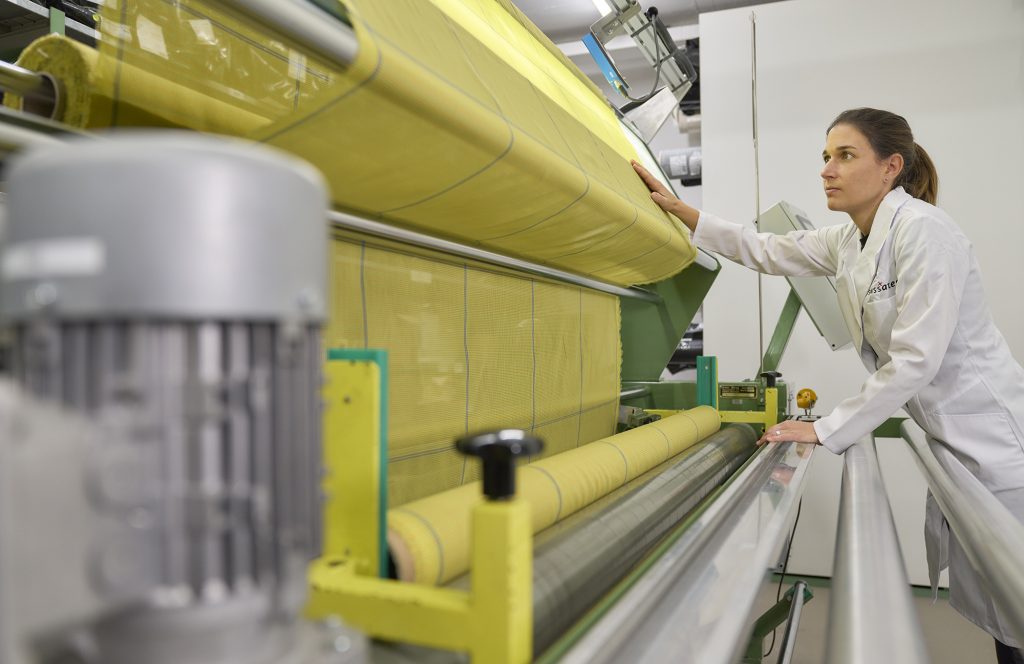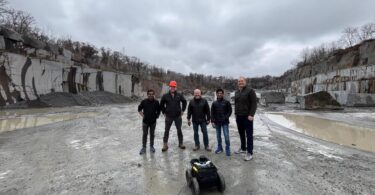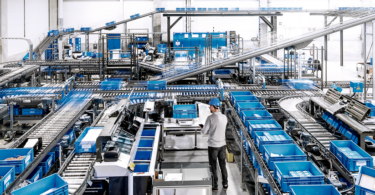A textile company in Switzerland ensures accurate testing of cleaning products for the textile industry using SICK’s SPEETEC laser surface motion sensor
It’s a fact of life: clothes and other textiles need to be cleaned. As a textile manufacturer, it is essential to understand the effectiveness of detergents and washing machines on cleaning these textiles. To help with this, textile test strips, treated with samples of various types of stains are used to test, and determine the effectiveness of various types of detergents and washing machines.
This a job that Swissatest Testmaterialien AG, a textile company in St. Gallen in Switzerland, has mastered producing standardized soiling on a wide variety of textiles. Using the SPEETEC laser surface motion sensor from SICK for non-contact length measurement, Swissatest ensures the contact-sensitive test strips can be tested for defects and cut to length in a user-friendly manner during the manufacturing process.
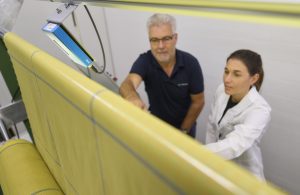
“Several aspects speak in favor of using SPEETEC as a sensor for length measurement,” said Harald Klien, Head of Technical Projects at Swissatest. “Firstly, the non-contact measurement leaves no trace on the soiled textile strips and, in contrast to rubber wheel measurement systems, also no abrasion marks. Secondly, when visually inspecting the textile web, we can move it forward and backward in the machine without a changeover – which was not possible with the previously used class 3 laser sensor. Furthermore, there is the enormous cost-effectiveness of the sensor – not only on account of its sensible, affordable price, but also due to its low laser class 1 rating, which means we no longer need to implement additional safety measures on the machine.”
During preliminary testing of the SPEETEC, the experienced textile technologist showed great results for measurement accuracy and reliable functioning of the device independent of the materials and soiling media. Therefore, they decided to approve the speed and length measurement sensor from SICK.
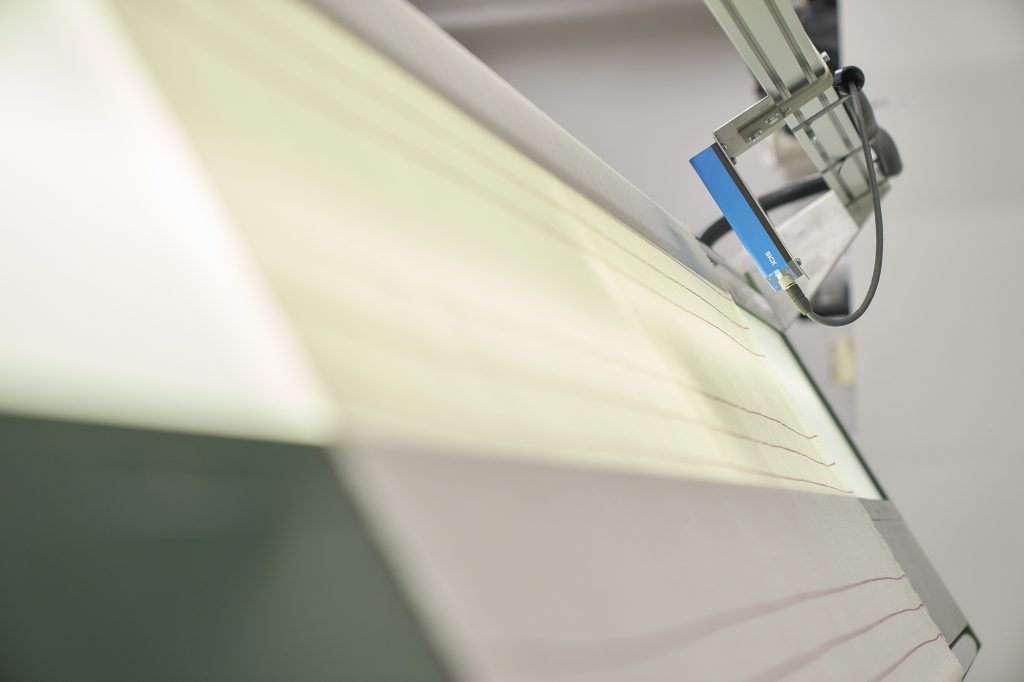
SPEETEC laser motion sensor is a new solution for an old challenge
SPEETEC is the ideal solution when it comes to performing automated speed, length, and position measurements for extremely smooth materials with a tendency to slip, for sensitive surfaces such as the textile test strips from Swissatest, or for materials prone to abrasion or adhesion.
“This challenge has existed for a long time – and the textile industry has been waiting just as long for a sensor solution like SPEETEC,” said Klien, “Especially since the sensor operates with micrometer precision, even for acceleration measurements, in start-stop applications with short material lengths as well as, which is especially important to us, in the forward-backward mode of a roll winding machine.”
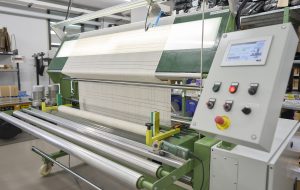
Soiling is more than just contamination
Swissatest Testmaterialien AG has been producing soiled textiles on a wide variety of materials since 1962 and can call itself the market leader with hundreds of thousands of test strips per year as well as around 1,500 large-sized customers around the world in almost 100 countries.
“This is also evident in the quality – because the valid testing of detergents, washing machines, and dryers, the assessment of washing, cleaning and hygiene systems, or the preparation of appropriate expert opinions by Swissatest requires that all soiled test strips – as a quasi-standard – possess long-term consistent quality characteristics,” Klien said. “They have to fulfill a number of relevant standards in order, in the end, to ensure comparable results and enable the differences between machines, cleaning agents and processes to be assessed.”
The textile webs are soiled with various materials, such as pig’s blood, red wine, cocoa milk, soot, machine oil, or skin oil after drying, then they are dried. They are measured calorimetrically and subjected to a visual product inspection prior to being wound up on a roll winding machine. Finally, the soiled textile webs are cut to a defined length and rolled up – as supplied to the customer or trimmed and sewed together into test strips in the manufacturing department of Swissatest.
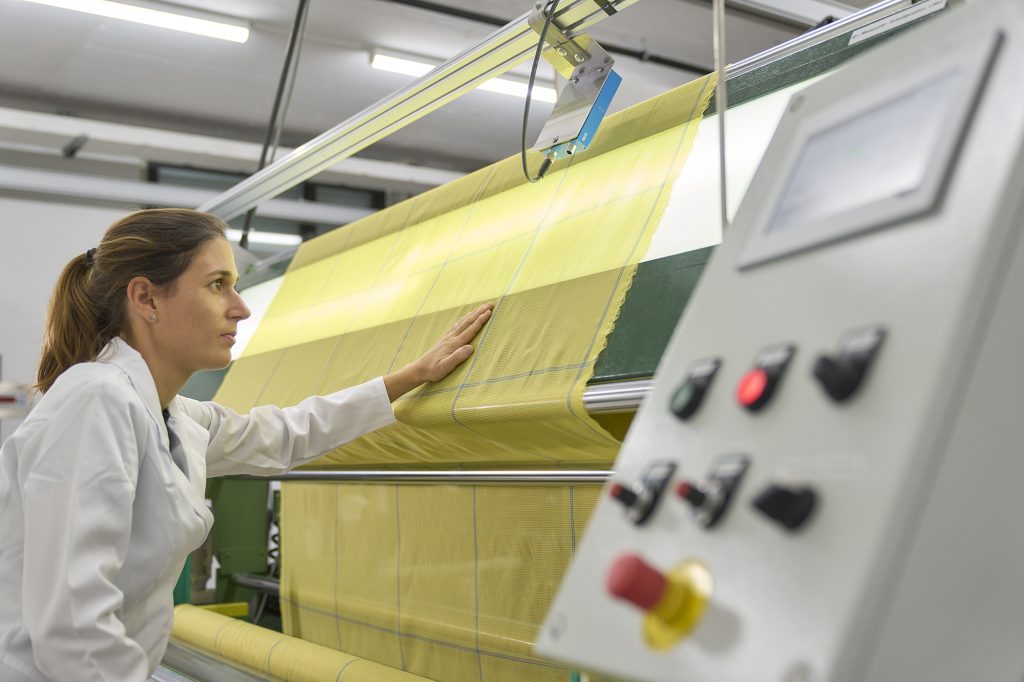
SPEETEC laser motion sensor greatly simplifies visual inspection for staff
For Klien, SPEETEC offers the right price and precision. “The process of visually detecting defects in the textile has been significantly simplified using the sensor from SICK,” he said.
It is necessary for the inspection staff to be able to arbitrarily move the textile web forwards and backwards in the roll winding machine without a changeover to precisely localize defects.
“In contrast to the laser velocimeter we used previously, which could not easily measure a forward and backward movement, the SPEETEC does not care in which direction the measurement is being taken, how much the material tension changes during measurement and wind-up, or how often a reversal of direction occurs in the inspection process. This has significantly simplified the visual inspection task,” Klien said.
This is another clear advantage of the innovative surface motion sensor. The SPEETEC impresses – not only at Swissatest – with its non-contact, slip-free and high precision measurement principle, its ease of integration, and its exceptional cost-effectiveness. It represents a new generation of laser sensors for measuring linear movements of surfaces in the textile industry and applications well beyond.
Want to learn more about web control with the SPEETEC?
